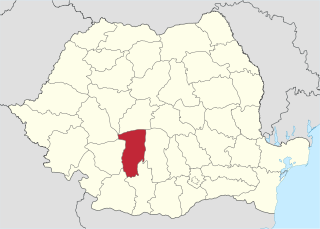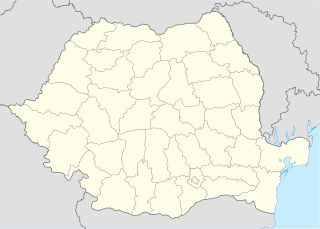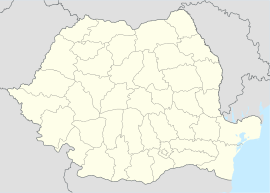
Vâlcea County is a county (județ) of Romania. Located in the historical regions of Oltenia and Muntenia, it is also part of the wider Wallachia region. Its capital city is Râmnicu Vâlcea.

Argeș County is a county (județ) of Romania, in Muntenia, with the capital city at Pitești.

According to the Moldovan law on territorial administrative organisation, Moldova is divided administratively into the following administrative territorial units: districts, cities/towns and villages. The administrative territorial organization of Moldova is made on 2 levels:
- villages (communes), sectors and cities/towns (municipalities) constitute the first level,
- districts, Chișinău municipality, Bălți municipality and Bender municipality constitute the second level.

A commune is the lowest level of administrative subdivision in Romania. There are 2,686 communes in Romania. The commune is the rural subdivision of a county. Urban areas, such as towns and cities within a county, are given the status of city or municipality.

The Olt Defile is a defile that has been cut into the Transyvanian Alps in south-central Romania by the river Olt. In the Brezoi-Titesti Depression portion of the defile are located hot spring resorts. In the surrounding mountains grow Walnut and oak trees, wild roses, and white ivy. Transportation is provided by highways and railways between Râmnicu Vâlcea and Sibiu.
Cişmea may refer to several villages in Romania:
Pripoare may refer to several villages in Romania:
Valea Mănăstirii may refer to several villages in Romania:
Valea Stânii may refer to several villages in Romania:
The Suhu is a left tributary of the river Geru in Romania. It flows into the Geru near Piscu. Its length is 72 km (45 mi) and its basin size is 373 km2 (144 sq mi). It is also known as Suhurlui, but the Suhurlui is also a right tributary of the Suhu. Before the regularization of the lower course of the Siret, it was a tributary of the Bârlădel, a branch of the Siret. After the embankment of the Siret plain, the upper course of the Bârladel became the lower reach of the Geru.
The Perișani is a right tributary of the river Suhu in Romania. It flows into the Suhu near Băleni. Its length is 16 km (9.9 mi) and its basin size is 32 km2 (12 sq mi).

Țițești is a commune in Argeș County, in southern central Romania. It is composed of five villages: Bucșenești-Lotași, Cișmea, Țițești, Valea Mănăstirii and Valea Stânii.

Titești is a commune located in Vâlcea County, Muntenia, Romania. It is composed of three villages: Bratovești, Cucoiu and Titești. These were part of Perișani Commune until 2002, when they were split off to form a separate commune.

Castra of Titești was a fort in the Roman province of Dacia.

The Cozia National Park is situated in Romania, in the north-east part of Vâlcea County, in administrative territory of localities Brezoi, Călimănești, Racoviţa, Perișani, Sălătrucel and Berislăvești.
According to the Moldovan law on territorial administrative organisation, two or more villages can form together a commune.

The Battle of the Olt Valley consisted in a prolonged military engagement during World War I between Romanian forces on one side and Central Powers' forces on the other side. Within just under a month, the Central Powers had managed to conquer the 30 miles (48 km)-long Olt Valley from its Romanian defenders.











